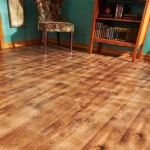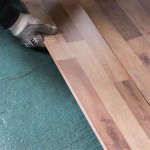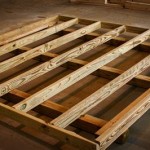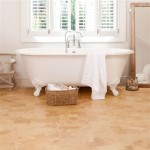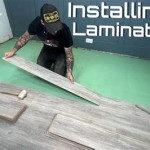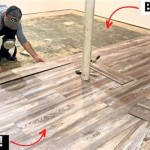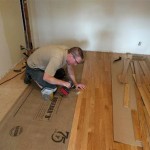How Much Does Replacing Wood Floors Cost?
Determining the cost of replacing wood floors is a multifaceted process, influenced by several variables. Understanding these variables is crucial for formulating an accurate budget and avoiding unexpected expenses. This article provides a comprehensive overview of the factors that contribute to the overall cost of wood floor replacement, covering material costs, labor expenses, preparation requirements, and potential hidden expenses.
Factors Influencing Material Costs
The type of wood chosen dramatically impacts the overall cost. Hardwood flooring is often categorized into solid hardwood and engineered hardwood, each with distinct price points and characteristics. Solid hardwood, made from a single piece of wood, is generally more expensive than engineered hardwood, which consists of a thin veneer of hardwood adhered to multiple layers of plywood or fiberboard. The specific species of wood also influences the price. Common options like oak and maple are typically more affordable than exotic species such as Brazilian cherry or teak.
Grade is another crucial factor. Hardwood flooring is graded based on its appearance, with higher grades exhibiting fewer knots and imperfections. Clear grade wood is the most expensive, offering a uniform and consistent appearance. Lower grades, such as select and common, contain more natural variations and are typically less costly. The chosen grade directly influences the visual appeal and, consequently, the price per square foot.
Finally, the finish applied to the wood can affect the overall cost. Pre-finished flooring, which is finished at the factory, tends to be more expensive upfront but can save on labor costs during installation. Unfinished flooring requires sanding, staining, and sealing on-site, adding to the labor expense but allowing for customization. The type of finish – polyurethane, oil-based, or water-based – also influences the price, with some finishes offering greater durability or aesthetic qualities at a higher cost.
Labor Costs Associated with Wood Floor Replacement
Labor costs are a significant component of wood floor replacement, often accounting for a substantial portion of the total expense. These costs are influenced by several factors, including the complexity of the installation, the size of the area being covered, and the prevailing labor rates in the region.
The complexity of the installation encompasses several aspects. For example, installing a straightforward plank layout in a rectangular room is typically less expensive than installing intricate patterns like herringbone or parquet. Subfloor preparation can also significantly affect labor costs. Uneven or damaged subfloors require additional work to level and repair, increasing the time and effort required for installation. The presence of obstacles, such as stairs, cabinets, or doorways, can also complicate the installation process and add to labor expenses.
The size of the area being covered directly correlates with labor costs. Larger projects naturally require more time and effort, resulting in higher labor expenses. However, some contractors may offer discounts for larger projects, so it is important to obtain multiple quotes and compare pricing structures. Additionally, regional labor rates can vary considerably. Urban areas typically have higher labor costs than rural areas due to higher living expenses and greater demand for skilled tradespeople.
The removal and disposal of the existing flooring also factors into the labor cost. Depending on the type of flooring being removed (e.g., carpet, tile, or linoleum), the process can be relatively straightforward or more time-consuming. Some contractors may include this cost in their overall estimate, while others may charge it separately. It is essential to clarify this aspect during the quoting process to avoid unexpected charges.
Preparation and Underlying Costs
Proper preparation is paramount for a successful wood floor replacement and can significantly impact the final cost. Subfloor preparation is a critical aspect, ensuring a level and stable surface for the new flooring. This may involve leveling uneven areas, repairing cracks or damage, and ensuring the subfloor is clean and dry. Neglecting subfloor preparation can lead to problems such as squeaking floors, uneven surfaces, and premature wear.
Moisture testing is another important aspect of preparation. Wood is susceptible to moisture damage, so it is crucial to ensure that the subfloor and the surrounding environment have appropriate moisture levels. Excessive moisture can cause the wood to warp, buckle, or rot. Moisture testing typically involves using a moisture meter to measure the moisture content of the subfloor and the wood flooring itself. If moisture levels are too high, remediation measures may be necessary, such as installing a vapor barrier or allowing the wood to acclimate to the environment for a longer period.
The need for underlayment also impacts the overall cost. Underlayment is a layer of material installed between the subfloor and the wood flooring. It provides several benefits, including sound insulation, moisture protection, and added cushioning. There are various types of underlayment available, each with different price points and performance characteristics. The choice of underlayment depends on factors such as the type of wood flooring being installed, the subfloor material, and the desired level of sound insulation.
Finally, consider the cost of moving furniture and appliances. If the area being floored is furnished, the cost of moving furniture and appliances needs to be accounted for. Some contractors may offer this service as part of their overall package, while others may charge it separately. Alternatively, homeowners may choose to move the furniture themselves to save on costs. However, this can be a time-consuming and physically demanding task, especially with heavy or bulky items.
Potential Hidden Expenses
When budgeting for wood floor replacement, it is crucial to anticipate potential hidden expenses that may arise during the project. These expenses can significantly increase the overall cost if not properly accounted for. One common hidden expense is the discovery of unexpected subfloor damage. During the removal of the existing flooring, underlying damage to the subfloor may be revealed, such as rot, mold, or insect infestation. Repairing or replacing the subfloor can add substantially to the project's cost and timeline.
Another potential hidden expense is the need for asbestos abatement. Homes built before the 1980s may contain asbestos in the existing flooring or subfloor materials. Asbestos is a hazardous material that requires professional removal and disposal. Asbestos abatement can be a significant expense, requiring specialized equipment and trained personnel. It is advisable to have the existing flooring and subfloor tested for asbestos before commencing the replacement project.
Unexpected plumbing or electrical work can also contribute to hidden expenses. During the floor replacement process, it may be necessary to relocate plumbing or electrical fixtures, such as radiators, outlets, or light fixtures. This can require hiring a licensed plumber or electrician, which can add to the overall cost. It is important to carefully inspect the area being floored for any potential plumbing or electrical issues before starting the project.
Finally, consider the cost of trim and molding. Trim and molding are used to cover the edges of the flooring and provide a finished look. The cost of trim and molding can vary depending on the type of material used (e.g., wood, MDF, or PVC) and the style. It is also important to factor in the cost of installation, as this can add to the overall expense. Matching the trim and molding to the new flooring can enhance the aesthetic appeal of the room, but it is important to factor this cost into the budget.
In summary, the cost of replacing wood floors is dependent on many factors, from the materials used, installation methods, and unexpected problems underneath. By considering all these aspects, one can manage their budget accordingly.

Cost To Remove Hardwood Floors Mk Remodeling

Floor Replacement Cost To Refloor A House Fixr

Floor Replacement Cost To Refloor A House Fixr

Flooring Installation Cost Guide 2025 Average S By Type

Cost To Install Hardwood Flooring Floor Fixr

How Much Does It Cost To Install Wide Plank Floors Floor Supply

Hardwood Flooring Cost 2024 Per Square Foot Mk
How Much Hardwood Flooring Costs And To Save

Cost Of Installing Hardwood Floors Top 2024 Guide

The True Cost Of Wood Flooring Installation Materials And More
See Also

